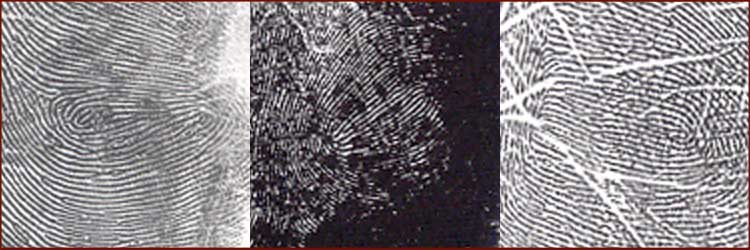HANDS & CANCER – Part 1: Nail clubbing, a famous indicator for various types of cancer!
November 30, 2009
 Clubbing in the fingers of a 33-year old female with pulmonary hypertension. Nail clubbing is found in 29% of lung cancer patients! ‘Fingernail clubbing’ is one of most well-know indicators for recognizing cancer in the hand. A.k.a. ‘Hippocratic nail’ this nail characteristic been known since the early days of the Greek philosopher Hippocrates, who recognized nail clubbing as a classic sign of disease. Today ‘nail clubbing’ is associated various lung diseases, especially lung cancer with non–small cell lung carcinoma. Nail clubbing is also linked with heart problems and gastrointestinal problems – but these are less common than lung problems. Statistics on nail clubbing & lung cancer:
How to recognize ‘clubbing fingernails’? Clubbing is usually a painless but complex fingernail disorder which often goes unnoticed of it’s presence in the hands of patients! In individuals without clubbing, if two opposing fingers are placed together, a diamond-shaped window will appear. In clubbing, this window is obliterated and the distal angle formed by the two nails becomes wider. This is known as Schamroth sign window test.
NOTICE: Cases of ‘brachydactyly’ should NOT be associated with the medical problems related to ‘nail clubbing’; the ‘clubbed thumb’ is likely the most well-known variant of ‘brachydactyly’ – which is e.g. seen in the hands of the american actress Megan Fox Actress Megan Fox has a ‘clubbed thumb’ – which should not be confused with ‘nail clubbing’. SUGGESTION FOR FURTHER READING: • Nail clubbing: developments, treatment & prevention! |
THE ‘MOON WHORL’ – A common characteristic in schizophrenia, Down’s syndrome… and autism?
November 24, 2009

The ‘Moon whorl’ a common characteristic in Down syndrome & schizophrenia The ‘whorl on the mount of Moon’ (a.k.a. the ‘hypothenar whorl’) is known as one of the mysterious characteristics that can only sometimes be found in the human hand. In 1943 Cummins & Midlo reported in their famous ‘Finger Prints, Palms & Soles’ statistics for a sample of 1281 German males. They found the ‘true whorl’ on the hypothenar in only 0.7% of right hands and 0.5% of left hands! What do we know about the ‘Moon whorl’? A few quote from the original article:
NEW RESEARCH FINDING ON AUTISM! Another quote from the article:
Some examples of the ‘hypothenar composite whorl’ are presented below. In the perspective of the fact that in the science of fingerprints the ‘composite whorl’ is related to the ‘double loop’, it is interesting to notice here that the new finding appears to confirm an earlier reported finding which pointed out that the hands of people with autism are often featured with a ‘double loop’ in the fingerprint of the pinky finger and the presence of 2 palmar loops below that 5th finger. In cases you’re interested to learn more about the basics of fingerprint classification – the illustration below describes the 8 most common types of fingerprints (including: 2 ‘arch’ variants, 2 ‘loop’ variants, and 4 ‘whorl’ variants). SUGGESTIONS FOR FURTHER READING: • How fingerprinting works! PICTURE: In the science of fingerprints ‘whorls’ is known a one of the 3 basic patterns (next to ‘loops’ and ‘arches’) – about 75% of people have at least 1 fingerprint whorl! |
PALM READING – The Palmistry books TOP 100!
November 5, 2009
 What are the best Palmistry books today? |
The Amazon Palmistry books TOP 100!
How is ‘Palmistry books TOP 100’ compiled? The rankings in this unique TOP 100 are based on the ‘Amazon sales rank‘ – a significant indicator which provides reliable info about how books are selling (online) around the world today. The “Amazon Palmistry TOP 100” presents a mix of old & new books about classic palmistry (including famous authors e.g.: William G. Benham & Cheiro) & modern palm reading (including respected authors e.g.: Richard Unger & Nathaniel Altman). |
| Interestingly, palmistry & hand analysis experts from the ‘Global Palm Reader Network’ are provided the opportunity to send their ‘votes’ (positive AND negative!), in order to establish an additional RANKING for those palm reading & hand analysis books which present the highest ‘quality’ – as defined by the individual experts in this field!
What is your favourite palmistry- or hand reading book? Please, feel free to name the title(s) if your favourite book(s) is not listed!! NOTICE: The ‘voting system’ has only been introduced in the first week of november 2009 – so the true impact of these votes should likely become visible early in 2010! SUGGESTIONS FOR FURTHER READING: |
 “Nail clubbing has been reported in 29% of patients with lung cancer and is observed more commonly in patients with non–small cell lung carcinoma (35%) than in patients with small cell lung carcinoma (4%).”
“Nail clubbing has been reported in 29% of patients with lung cancer and is observed more commonly in patients with non–small cell lung carcinoma (35%) than in patients with small cell lung carcinoma (4%).”




